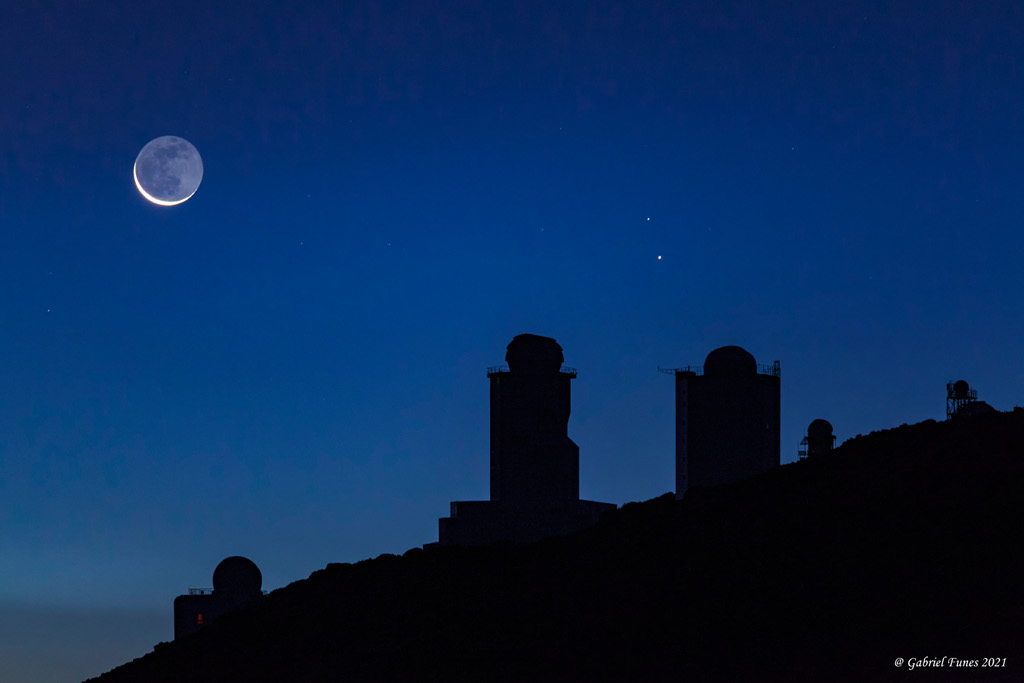2021年7月10日
Mercury and the Da Vinci Glow
Image Credit & Copyright: Gabriel Funes
Explanation: On July 8th early morning risers saw Mercury near an old Moon low on the eastern horizon. On that date bright planet, faint glow of lunar night side, and sunlit crescent were captured in this predawn skyscape from Tenerife’s Teide National Park in the Canary Islands. Never far from the Sun in planet Earth’s sky, the fleeting inner planet shines near its brightest in the morning twilight scene. Mercury lies just below the zeta star of the constellation Taurus, Zeta Tauri, near the tip of the celestial bull’s horn. Of course the Moon’s ashen glow is earthshine, earthlight reflected from the Moon’s night side. A description of earthshine, in terms of sunlight reflected by Earth’s oceans illuminating the Moon’s dark surface, was written over 500 years ago by Leonardo da Vinci. Waiting for the coming dawn in the foreground are the Teide Observatory’s sentinels of the Sun, also known as (large domes left to right) the THEMIS, VTT, and GREGOR solar telescopes.
Tomorrow’s picture: try to see the Moon
水星与达文西灰光
影像提供与版权: Gabriel Funes
说明: 在7月8日那天早起的人们,见到了水星及邻近的残月,低悬在东方的地平线上方。这幅在那天摄于加纳利群岛特内里费岛泰德国家公园的日出前影像,就记录了这颗明亮的行星、日耀蛾眉月、与暗淡的月球夜面。在那时的曙光天空中,从地球看出去一直徘徊在太阳附近的水星,接近它的最大亮度。影像里,水星位在金牛座牛角尖附近的天关(Zeta Tauri)下方。月亮所散发的灰光,其实是从月球夜面反射的地照光。而早在500多年前,达文西就曾笔述:从地球海洋反射的阳光映在月亮黝黑的夜面上,形成了地照光。前景伫立在曙光中的建物,则是泰德天文台的3座太阳望远镜之圆顶,其名称由左到右分别为西蜜斯(THEMIS)、VTT及葛瑞果(GREGOR)。 (译注:地照光的主要来源,其实是被地球云层反射的阳光。)
明日的图片: try to see the Moon



